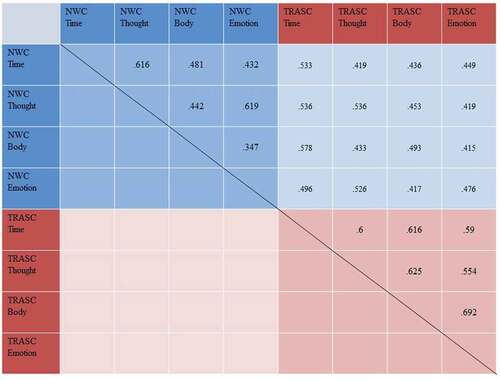Figures & data
Table 1. Items from the Multidimensional Inventory of Dissociation (MID) descriptions of trauma-related altered states of consciousness (TRASC) and normal waking consciousness (NWC) across the four-dimensional (4-D) model dimensions of time, thought, body and emotion.
Table 2. Sample characteristics and clinical comorbidity.
Table 3. Correlations between dimensions of trauma-related altered states of consciousness (TRASC) or normal waking consciousness (NWC), and measures of dissociation and childhood abuse.
Table 4. Logistic regressions predicting a comorbidity of complex dissociative disorder.


